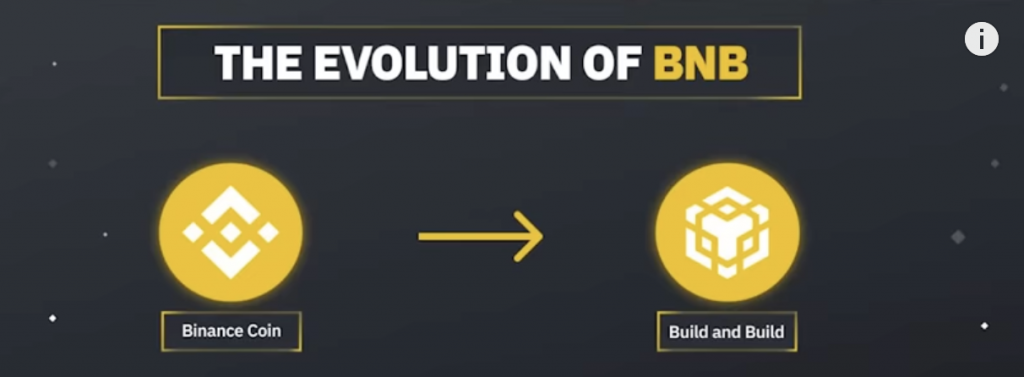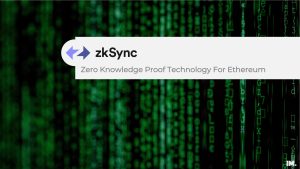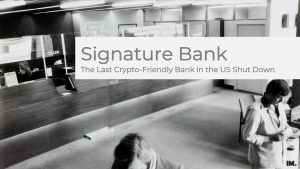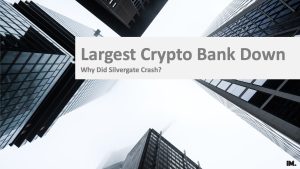The Binance Network In A Nutshell
Binance is one of those names that needs little to none introduction. Anyone even slightly familiar with the crypto world will have heard the name. It is after all the leading global crypto exchange! And this position put the company and its founder 赵长鹏 Changpeng Zhao (or simply CZ) in the spotlight quite a few times in the past months.
But is there still growth potential for what is already by far the biggest crypto exchange in the world? Well, yes.
Read on to find out what the future holds for Binance Network.

A Quick Look At Their History
Binance was founded in 2017 by CZ after a career as a software engineer building advanced trading software tools for the traditional financial markets. One of the largest corporations he worked for was Bloomberg. He finance the company with own money. He had been already all-in in crypto since 2013, when he sold his apartment in Shanghai to buy BTC! Just saying.
During their ICO, Binance raised $ 15 million by selling 50% of their token supply (100 million tokens) for $0,15 per token. Even compared to October 2022 prices, the token price has grown by almost 2000 times. And 4000 times if we compare it to its all time high in 2021.
According to CZ, the ICO and a few early angel investors, owning 10% of the token supply, were the only investments Binance ever needed so far. That was enough to transform a crypto exchange in one of the most influential decentralized networks in the world.
The biggest development started in 2019 when Binance launched the Binance (Beacon) Chain. This was an important moment since Binance became an exchange running on its own network and with its own native token: BNB.
Soon after, in September 2020, the Binance Smart Chain network, to support smart contracts and development of decentralized applications.
The Binance Network has also officially rebranded to “BNB Network” after merging the two main networks, with BNB standing for Build ‘N Build 😉

Binance Network’s Potential
From its launch in 2020, Binance network generates a stunning $ 850 million in revenues from transaction costs. This puts it at #2, second only to (obviously) the Ethereum network. You can read the latest update on the Ehereum network here.
One of the latest initiatives showing Binance’s potential is the launch of a $ 1 billion fund in support of the decentralized app development, called BSC Accelerator Fund. With this fund, the Binance Network is planning to stimulate development in various relevant areas of the decentralized world, including finance (DeFi), gaming, metaverse, artificial intelligence, and a lot more. This will undoubtedly help the Binance ecosystem grow immensely in the coming years.
Next to the accelerator fund, Binance launched a $ 500 million venture capital fund called Binance Labs. The fund will invest in other companies working on decentralized products solving real-life use-cases. An example? E-mail, cloud storage, voting systems (DAOs), digital identity, etc.
My expectation is that both the accelerator and the venture capital fund will be governed by the Binance community through a DAO system on the Binance Network. This is not implemented yet. But it would make Binance 100% decentralized as a project and be a real example of what a truly decentralized community can achieve working together.
BNB Valuation (Quick & Dirty)
As of October 2022, Binance is valued at $ 43,6 billion. At its peak in 2021, it reached a valuation close to $ 100 billion. I believe that with the current developments and investments in the network, Binance has the potential to reach a valuation close to $ 200 billion.
Taking into account their token burn mechanism, with a circulating supply of 150 million tokens, that valuation would implicate a token price of $ 1333. Eventually, BNB is designed to stabilize at a circulating supply of 100 million tokens, which implies $ 1500 per BNB.
Tokenomics
First rule of crypto – get familiar with tokenomics. For those of you who are new here, tokenomics are the token’s mechanics and economics. This can be related to how many tokens are issued during an ICO, their lock-up period (for how long an investor cannot sell), their vesting period (what percentage is released after a certain period of time), how many tokens are reserved for founders, etc.
These things are VERY important, for one simple reason, great tokenomics determine how well a company or a project can be run independently in the decentralized world. In the extreme case where all tokens are held by 1 wallet, the network is centralized. Even if it technically runs on the blockchain.
I have already mentioned the Binance Network has its own native token called BNB. The BNB token actually exists in three forms:
- as an ERC20 token on the Ethereum network (from the original Binance exchange implementation),
- as a BEP2 token on the BNB Beacon Chain (the main net), and
- as a BEP20 token on the BNB Smart Chain (the additional network with Binance smart contracts).
BEP stands for Binance Evolution Proposal. These are projects on the BNB Chain that can be proposed, voted, and implemented only by validators on the network. Some of them, as you can notice in the token name, got very popular like the BEP20 on the Smart Chain. NFTs on the Binance Smart Chain are for example BEP20 tokens! Visit the Binance NFT Marketplace here.
The current token ownership table is as follows:
Tokens | Supply (BNB) | Owned by: |
|---|---|---|
50% | 80 million | ICO Investors |
40% | 64 million | Founders |
10% | 16 million | Angel Investors |
All tokens are way beyond the end of their vesting period. This means that all investors can sell their tokens on the market, including founders. However, amongst the biggest wallets on the Binance blockchain explorer, CZ owns approximately 20% of the current token supply and has not sold 1 single token, not even in the crazy market in 2021.
The token’s initial supply was of 200 million. However, BNB had a burn mechanism to reduce its supply from the very start. The company used part of its profits to buy back tokens and burn them as a strategy to reduce its supply in a deflationary fashion. This mechanism has been replaced by an algorithmic burn mechanism. There is not much information about the logic used. What I know is that tokens are burned based on current market demand, price, and block of transactions being processed on the network.
Low and behold, almost 40 million tokens were burned so far, either buy-back or by the new algorithm. Why am I telling you all this? Well, hold tight, because it is about to get tricky.
Binance Regulatory Issues
Binance has gotten a lot of attention lately from regulators around the world. This raises an much more fundamental issue on how to regulate an “organization” that is agnostic to country lines by design. But let’s park this topic for now.
If you take another look at the tokenomics, there are a few things that stand out:
- a large portion of the token supply is controlled by the founders,
- the founders’ influence on the network will only increase (assuming they will not sell) due to the burning mechanism, and
- the burning strategy has been tightly correlated to the BNB price movement over the past months.
You might ask yourself, so what? Well, let me tell you. The three points I mentioned are regulatory nightmare 101.
Why? To understand that we need to quickly take a look at how the regulatory world sees crypto assets.
Binance’s Howey Test
The US Security and Exchange Commission (SEC) uses the following questionnaire (simplified for the sake of our chat) to determine whether a financial product classifies as a security:
- Did you use (fiat) money to buy it?
- Is the price equal for everyone?
- Are you expecting a profit?
- Is the expectation linked to one specific entity or person?
Now, for Binance, as well as for every other token out there, the answer to question 1, 2, and 3 is YES.
However, question 4 – there’s where the problem arises. The SEC is of the opinion that most of Binance’s token price growth (and therefore the investors’ expectation) were due to the founders and a selected group of validators (also owning 20% of the token supply) – in other words 1 entity.
This is why the general rule of thumb is that:
“If a token is sufficiently decentralized, it is not a security according to the SEC”
This ensures that all price movements, growth, and expectation of profits are linked to a system and not to a single entity or person.
This topic is currently at the center of a long trial between Binance, Binance US (the American version of the exchange and network), and the SEC awaiting final hearing.
My Final Considerations
I believe Binance will be able to resolve the dispute with the Security and Exchange Commission. With that resolved, I do not expect issued with any other regulator as the US is still (to this day) the reference point for other countries.
The key to resolving this dispute is however admitting that Binance was indeed very centralized. This was definitely the case at the moment of the ICO. `And perhaps until 2020, before the launch of the Binance Beacon Chain and Smart Chain. I think now there is enough evidence to show that Binance is sufficiently decentralized not to be considered 1 organization in the sense of the SEC security definition.
With this issue resolved, the sky is the limit for Binance!
赵长鹏, 祝你好运啊. Good luck CZ, rooting for you man.
Newsletter
Stay up-to-date with the latest developments in the stock and crypto market., fund, and crypto market.
Disclosure
These are unqualified opinions, and this newsletter, is meant for informational purposes only. It is not meant to serve as investment advice. Please consult with your investment, tax, or legal advisor, and do your own research.




No comment yet, add your voice below!